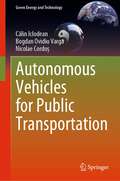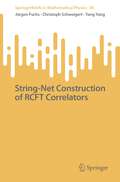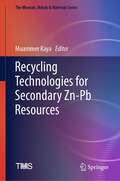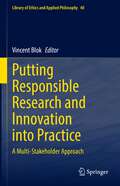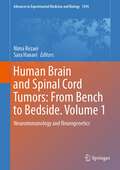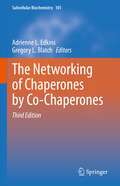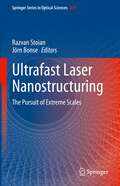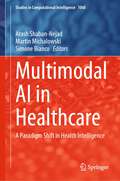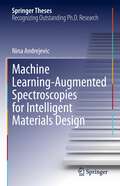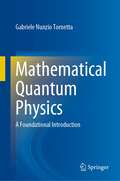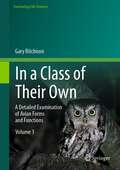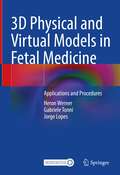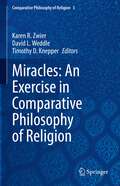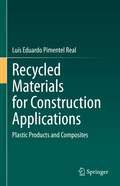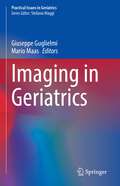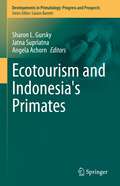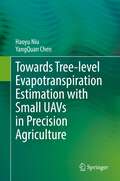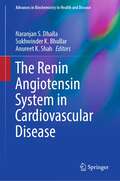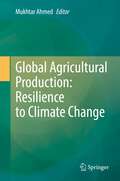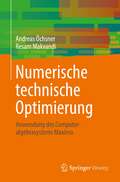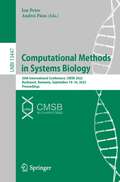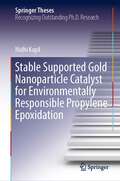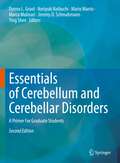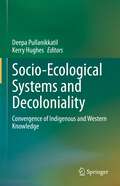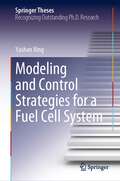- Table View
- List View
Autonomous Vehicles for Public Transportation (Green Energy and Technology)
by Călin Iclodean Bogdan Ovidiu Varga Nicolae CordoșThis book presents an interdisciplinary approach to autonomous driving technology design and development. It discusses a methodology of simulation that allows specialists to evaluate autonomous vehicle sensors functionality and integration, energy flow, efficiency, range, and service under public transport.The design, calibration, and physical model behind each autonomous vehicle sensor and component is explained. For each specific vehicle, the powertrain is analyzed, and output results are presented through the use of specific automotive industrial software (IPG CarMaker).The book gives the reader a clear perspective of the key factors influencing the global functionality of autonomous shuttle buses with respect to both their inner components the variable exterior factors and an exhaustive legal perspective in relation of their presence on public roads.
String-Net Construction of RCFT Correlators (SpringerBriefs in Mathematical Physics #45)
by Jürgen Fuchs Christoph Schweigert Yang YangThis book studies using string-net models to accomplish a direct, purely two-dimensional, approach to correlators of two-dimensional rational conformal field theories. The authors obtain concise geometric expressions for the objects describing bulk and boundary fields in terms of idempotents in the cylinder category of the underlying modular fusion category, comprising more general classes of fields than is standard in the literature. Combining these idempotents with Frobenius graphs on the world sheet yields string nets that form a consistent system of correlators, i.e. a system of invariants under appropriate mapping class groups that are compatible with factorization. The authors extract operator products of field objects from specific correlators; the resulting operator products are natural algebraic expressions that make sense beyond semisimplicity. They also derive an Eckmann-Hilton relation internal to a braided category, thereby demonstrating the utility of string nets for understanding algebra in braided tensor categories. Finally, they introduce the notion of a universal correlator. This systematizes the treatment of situations in which different world sheets have the same correlator and allows for the definition of a more comprehensive mapping class group.
Recycling Technologies for Secondary Zn-Pb Resources (The Minerals, Metals & Materials Series)
by Muammer KayaThis book is a reflection of all aspects of secondary Zn and Pb processing, including the global business trends of the metals, plant operations, fundamental developments, emerging technologies, and environmental considerations. It stands as a ready reference for the processing, engineering, and research communities concerned with the latest developments in the hydrometallurgical and pyrometallurgical processing of secondary Zn-Pb resources.
Putting Responsible Research and Innovation into Practice: A Multi-Stakeholder Approach (Library of Ethics and Applied Philosophy #40)
by Vincent BlokThis Open Access book builds on the experiences of one of the largest European projects in the domain of responsible Research and Innovation: NewHoRRIzon. It highlights the potential of and opportunity in responsible R&I to conduct innovation in a socially responsible way. Employing the methodology of Social Labs, the book analyses responsible R&I from an experience-based viewpoint and further explores the application of responsible R&I beyond scholarly and industrial interests. The contributors analyze the current European R&I landscape, provide reflection and reconceptualization of its core concepts, and project future challenges in relation to responsible R&I. The book complements the readers' line of work by providing insights on how responsible R&I can be applied by the audience, for example, in their decision-making processes.
Human Brain and Spinal Cord Tumors: Neuroimmunology and Neurogenetics (Advances in Experimental Medicine and Biology #1394)
by Nima Rezaei Sara HanaeiBrain tumors comprise about 5–9% of all human neoplasms; and interestingly the central nervous system (CNS) neoplasms are ranked among the most prevalent neoplasms of childhood as well. Besides to the morphologic and histopathologic characteristics, and as each pathologic states first starts with molecular alterations, each tumor may have its own story in the matter of activating tumorigenesis pathways and having specific molecular characteristics. Importantly, the molecular classification of tumors has been highly considered in the past few decades for taking the most appropriate therapeutic approach. On the other hand, the tumors shall have tumor-scape mechanisms preventing the immunologic system to eliminate its invasion. The failure of innate and acquired immune system to defeat tumorigenesis mechanisms would consequently result in tumor development. Interestingly, the neuro-immunologic mechanism plays a role in development of psychiatric manifestations of brain tumors as well. Taking all these to account, the different arms of innate immunity, acquired immunity, and genetics have been approached to defeat development and/or progression of such tumors. Accordingly, the activation immunotherapeutic approaches focus on activating or strengthening the anti-tumor immunologic pathways in order to assist the weakened immune system to defeat the tumor (such as Dendritic cell vaccination, DNA vaccines, peptide vaccines, viral vector-based vaccines, monoclonal antibodies, and CAR T-cell therapy). In addition to immunologic components of brain and spinal cord tumors, numerous genes and genetic pathways have been recognized to take part in tumorigenesis. Taking these non-immune genetic pathways to account, some other therapeutic approaches such as stem cell therapy and gene therapy have been developed in the new era of cancer treatment. Moreover, and besides the biologic and medical aspects of these tumors, different physical/mathematical models have been proposed to either explain or predict tumor behavior. Such models would be advantageous in developing new therapeutic modalities in pre-clinical stages and enter new eras in cancer treatment. The first book of Human Brain and Spinal Cord Tumors, Neuro-immunology and Neuro-genetics, will mainly discuss the neuro-immunology and neurogenetic pathways associated with development of brain and spinal cord tumor. After a short introduction chapter, this book will focus on the role of innate and acquired immunity on development of these tumors and then the immunotherapeutic approaches to defeat these tumorigenesis mechanisms. This book will then focus on genetic aspects of brain and spinal cord tumors and bioinformatics models to describe the behavioral patterns of these tumors, as well as associated therapeutic approaches such as stem cell therapy and gene therapy. This volume of book could be useful for experts in basic sciences, mainly geneticists and immunologists, and also physicians of different specialties, mainly neurosurgeons, neurologists, neuropathologists and neuroradiologists.
The Networking of Chaperones by Co-Chaperones (Subcellular Biochemistry #101)
by Adrienne L. Edkins Gregory L. BlatchCo-chaperones are important mediators of the outcome of chaperone assisted protein homeostasis, which is the dynamic integration of the processes of protein folding, degradation and translocation to ensure that cellular function is finely tuned in space and time. This third edition of the book The Networking of Chaperones by Co-chaperones describes how the function of the major molecular chaperones is regulated by co-chaperones, a diverse cohort of non-client proteins. Since the second edition was released, not only has knowledge deepened on how co-chaperones act as nodes to network and functionalise chaperones, but an understanding of their broader biological function has started to emerge. The third edition provides new and updated chapters highlighting recent developments and emerging themes on co-chaperones, such as their extracellular functions, their role in human disease and their status as putative drug targets. The book is a useful resource for both newcomers and established researchers in the field of cell stress and chaperones, as well as those interested in cross-cutting disciplines such as cellular networks and systems biology.
Ultrafast Laser Nanostructuring: The Pursuit of Extreme Scales (Springer Series in Optical Sciences #239)
by Razvan Stoian Jörn BonseBringing together contributions from leading experts in the field, this book reviews laser processing concepts that allow the structuring of material beyond optical limits, and methods that facilitate direct observation of the underlying mechanisms by exploring direct structuring and self-organization phenomena. The capacity to nanostructure material using ultrafast lasers lays the groundwork for the next generation of flexible and precise material processing tools. Rapid access to scales of 100 nm and below in two and three dimensions becomes a factor of paramount importance to engineer materials and to design innovative functions. To reflect the dynamic nature of the field at all levels from basic science to applications, the book is divided into three parts, Fundamental Processes, Concepts of Extreme Nanostructuring, and Applications, each of which is comprehensively covered. This book will be a useful resource for graduate students and researchers in laser processing, materials engineering, and nanoscience.
Multimodal AI in Healthcare: A Paradigm Shift in Health Intelligence (Studies in Computational Intelligence #1060)
by Arash Shaban-Nejad Martin Michalowski Simone BiancoThis book aims to highlight the latest achievements in the use of AI and multimodal artificial intelligence in biomedicine and healthcare. Multimodal AI is a relatively new concept in AI, in which different types of data (e.g. text, image, video, audio, and numerical data) are collected, integrated, and processed through a series of intelligence processing algorithms to improve performance. The edited volume contains selected papers presented at the 2022 Health Intelligence workshop and the associated Data Hackathon/Challenge, co-located with the Thirty-Sixth Association for the Advancement of Artificial Intelligence (AAAI) conference, and presents an overview of the issues, challenges, and potentials in the field, along with new research results. This book provides information for researchers, students, industry professionals, clinicians, and public health agencies interested in the applications of AI and Multimodal AI in public health and medicine.
Machine Learning-Augmented Spectroscopies for Intelligent Materials Design (Springer Theses)
by Nina AndrejevicThe thesis contains several pioneering results at the intersection of state-of-the-art materials characterization techniques and machine learning. The use of machine learning empowers the information extraction capability of neutron and photon spectroscopies. In particular, new knowledge and new physics insights to aid spectroscopic analysis may hold great promise for next-generation quantum technology. As a prominent example, the so-called proximity effect at topological material interfaces promises to enable spintronics without energy dissipation and quantum computing with fault tolerance, yet the characteristic spectral features to identify the proximity effect have long been elusive. The work presented within permits a fine resolution of its spectroscopic features and a determination of the proximity effect which could aid further experiments with improved interpretability. A few novel machine learning architectures are proposed in this thesis work which leverage the case when the data is scarce and utilize the internal symmetry of the system to improve the training quality. The work sheds light on future pathways to apply machine learning to augment experiments.
Mathematical Quantum Physics: A Foundational Introduction
by Gabriele Nunzio TornettaThis book provides the rigorous mathematical foundations of Quantum Physics, from the operational meaning of the measuring process to the most recent theories for the quantum scale of space-time geometry. Topics like relativistic invariance, quantum systems with finite and infinitely many degrees of freedom, second quantisation, scattering theory, are all presented through the formalism of Operator Algebras for a precise mathematical justification.The book is targeted to graduate students and researchers in the area of theoretical/mathematical physics who want to learn about the mathematical foundations of quantum physics, as well as the mathematics students and researchers in the area of operator algebras/functional analysis who want to dive into some of the applications of the theory to physics.
In a Class of Their Own: A Detailed Examination Of Avian Forms And Functions (Fascinating Life Sciences Ser.)
by Gary Ritchison3D Physical and Virtual Models in Fetal Medicine: Applications and Procedures
by Heron Werner Gabriele Tonni Jorge LopesTechnological innovations accompanying advances in medicine have given rise to the possibility of obtaining better-defined fetal images that assist in medical diagnosis and contribute toward genetic counseling offered to parents during the prenatal care. 3D printing is an emerging technique with a variety of medical applications such as surgical planning, biomedical research and medical education.Clinical Relevance: 3D physical and virtual models from ultrasound and magnetic resonance imaging have been used for educational, multidisciplinary discussion and plan therapeutic approaches. The authors describe techniques that can be applied at different stages of pregnancy and constitute an innovative contribution to research on fetal abnormalities. We will show that physical models in fetal medicine can help in the tactile and interactive study of complex abnormalities in multiple disciplines. They may also be useful for prospective parents because a 3D physical model with the characteristics of the fetus should allow a more direct emotional connection to their unborn child.
Miracles: An Exercise in Comparative Philosophy of Religion (Comparative Philosophy of Religion #3)
by Karen R. Zwier David L. Weddle Timothy D. KnepperThis volume provides a comparative philosophical investigation into a particular concept from a variety of angles—in this case, the concept of “miracle.” The text covers deeply philosophical questions around the miracle, with a multiplicity of answers. Each chapter brings its own focus to this multifaceted effort. The volume rejects the primarily western focus that typically dominates philosophy of religion and is filled with particular examples of miracle narratives, community responses, and polemical scenarios across widely varying religious contexts and historical periods. Some of these examples defy religious categorization, and some papers challenge the applicability of the concept “miracle,” which is of western and monotheistic origin. By examining miracles thru a wide comparative context, this text presents a range of descriptive content and analysis, with attention to the audience, to the subjective experiences being communicated, and to the flavor of the narratives that come to surround miracles. This book appeals to students and researchers working in philosophy of religion and science, as well those in comparative religion. It represents, in written form, some of the perspectives and dialogue achieved in The Comparison Project’s 2017–2019 lecture series on miracles. The Comparison Project is an enterprise in comparing a variety of religious voices, allowing them to stand in dialogue.
Recycled Materials for Construction Applications: Plastic Products and Composites
by Luís Eduardo RealThis book presents the state of the art on the topic of recycling of plastic building materials, comprising a synthetic market analysis, and presenting the latest developments in plastic recycling technologies. The book also makes recommendations to optimize the success of recycling and encourage the circular economy, while acknowledging the environmental and sustainability implications of plastic recycling for building construction. The distinctive features of this book are the variety of topics covered on sustainable plastic recycling, the discussion of advances in plastic recycling technology, detailed illustrations, and summarized descriptions of separation processes. This book is a guide for both technical and non-technical readers, and for anyone involved in plastic waste or recycling, including researchers and students in plastics engineering, polymer science, polymer chemistry, environmental science, and sustainable materials.
Imaging in Geriatrics (Practical Issues in Geriatrics)
by Giuseppe Guglielmi Mario MaasThis book addresses in a structured and multidisciplinary way the medical issues related to aging, paying particular attention to the role of diagnostic imaging in the field of cardiovascular, musculoskeletal, respiratory, neurological, urogenital and gastrointestinal diseases.The progressive increase of the average age of the population, of life expectancy and the improvement of the quality of life are common phenomena in many countries of the World. Over the years, the management of older persons seems to have had an increasing impact both on the socio-economic and on the medical-health level. Medicine, in all its branches, has in fact focused more and more on the health conditions of the elderly patient and its protection and, in this context, due to the increasing progress in the field of technology and imaging methods, the radiologist occupies a front-line position. Unlike the young or middle-aged patients, the elderly need special care and attention, especially because of the involutive-degenerative senile processes they have to face, which must be taken into account to avoid incurring into misdiagnosis. Radiology, in fact, aims more and more at developing imaging techniques that are on the one hand satisfactory and comprehensive, but at the same time that do not represent any risk and/or obstacle for the elderly patient. The aim of this book is to provide the radiologist, and not only, with an adequate and complete geriatric preparation, thus to improve the diagnostic-therapeutic management of those patients who, to date, constitute the most conspicuous part of the medical-health users.
Ecotourism and Indonesia's Primates (Developments in Primatology: Progress and Prospects)
by Sharon L. Gursky Jatna Supriatna Angela AchornThe basic goal of the volume is to compile the most up to date research on the effect of ecotourism on Indonesia’s primates. The tremendous diversity of primates in Indonesia, in conjunction with the conservation issues facing the primates of this region, have created a crisis whereby many of Indonesia’s primates are threatened with extinction. Conservationists have developed the concept of “sustainable ecotourism” to fund conservation activities. National parks agencies worldwide receive as much as 84% of their funding from ecotourism. While ecotourism funds the majority of conservation activities, there have been very few studies that explore the effects of ecotourism on the habitat and species that they are designed to protect. It is the burgeoning use of “ecotourism” throughout Indonesia that has created a need for this volume where the successes and pitfalls at various sites can be identified and compared.
Towards Tree-level Evapotranspiration Estimation with Small UAVs in Precision Agriculture
by Haoyu Niu YangQuan ChenEstimating evapotranspiration (ET) has been one of the most critical research areas in agriculture because of water scarcity, the growing population, and climate change. The accurate estimation and mapping of ET are necessary for crop water management. Traditionally, researchers use water balance, soil moisture, weighing lysimeters, or an energy balance approach, such as Bowen ratio or eddy covariance towers to estimate ET. However, these ET methods are point-specific or area-weighted measurements and cannot be extended to a large scale. On the other hand, while remote sensing is able to provide spatially distributed measurements, the spatial resolution of multispectral satellite images is often not enough for crops with clumped canopy structures, such as trees and vines. Unmanned aerial vehicles (UAVs) can mitigate these spatial and temporal limitations. Lightweight cameras and sensors can be mounted on the UAVs and take high-resolution images. Unlike satellite imagery, the spatial resolution of the UAV images can be at the centimeter-level. UAVs can also fly on-demand, which provides high temporal imagery. This book examines the different UAV-based approaches of ET estimation. Models and algorithms, such as mapping evapotranspiration at high resolution with internalized calibration (METRIC), the two-source energy balance (TSEB) model, and machine learning (ML) are discussed. It also covers the challenges and opportunities for UAVs in ET estimation, with the final chapters devoted to new ET estimation methods and their potential applications for future research.
The Renin Angiotensin System in Cardiovascular Disease (Advances in Biochemistry in Health and Disease #24)
by Naranjan S. Dhalla Sukhwinder K. Bhullar Anureet K. ShahThis book on “Renin-Angiotensin System in Cardiovascular Disease” includes 25 chapters, which are organized in three sections, namely (i) modulatory aspects, (ii) pathophysiological aspects, and (iii) pharmacotherapeutic aspects. It includes an updated as well as comprehensive knowledge about molecular and cellular aspects for the role of the renin-angiotensin system (RAS) in the pathophysiology and therapy of cardiovascular diseases such as hypertension, atherosclerosis, ischemic heart disease, and heart failure. This book emphasizes the molecular and cellular mechanisms, signaling transduction pathways involved in the development of different cardiovascular diseases due to the prolonged activation of RAS. Furthermore, biochemical mechanisms are outlined for the inhibition of this system by the blockade of angiotensin converting enzyme as well as angiotensin II type 1 receptors in patients suffering from cardiovascular abnormalities. Since cardiovascular disease is the number one cause of death worldwide, leading to approximately 17.9 million deaths each year, there is a keen interest in understanding the pathogenesis and improving its therapy. In this regard, we can attest that this book provides ample information about essential components of RAS and their role in the development of cardiovascular disease.From the selection of recognized global experts in their area of investigation, this book can be seen to cover diverse cardiovascular aspects and molecular and cellular mechanisms of angiotensin II action for the development of different cardiovascular abnormalities. It is our contention that this book will be most suitable for promoting knowledge in the field of RAS biology and will be of great interest to health professionals involved in both experimental and clinical cardiology as well as academic investigators and cardiovascular scientists, graduate students, and fellows worldwide.
Global Agricultural Production: Resilience to Climate Change
by Mukhtar AhmedThis book covers all aspects related to climate change and agriculture. The book discusses Global Climate Models (GCMs), Coupled Model Intercomparison Project (CMIP) and application of strategic management tool that includes RCP (Representative concentration Pathway), SSP (Shared Socio-economic Pathways) and SPA (Shared climate Policy Assumptions). The book provides information on how climate change, agricultural productivity and food security are interlinked. The impacts of climate change on food security are studied through different climatic drivers e.g., ENSO (El Niño–Southern Oscillation) and SOI (Southern Oscillation Index). These drivers are responsible for the climatic extreme events hence early prediction of these drivers could help to design appropriate adaptive measures for the agriculture sector and could be considered as early warning tools for risk management. Similarly, climate change and process-based soil modeling as well as the role of soil microbes and climate smart agriculture are discussed in this book. Climate change impacts on legume crop production and adaptation strategies are presented, with details about cereal crop modeling, perspectives of Camelina sativa as well as low input biofuel and oilseed crop, greenhouse gases (GHGs) emissions and mitigation strategies.
Numerische technische Optimierung: Anwendung des Computeralgebrasystems Maxima
by Andreas Öchsner Resam MakvandiDiese Studienhilfe zu numerischen Optimierungsverfahren richtet sich an Studierende des Maschinenbaus im Grundstudium und im Hauptstudium. Optimierungsverfahren gewinnen zunehmend an Bedeutung für den Leichtbau, wo eine Gewichtsreduzierung z.B. im Automobilbau oder in der Luft- und Raumfahrtindustrie zu einem geringeren Kraftstoffverbrauch und einer entsprechenden Senkung der Betriebskosten sowie zu positiven Auswirkungen auf die Umwelt führen kann. Basierend auf dem freien Computeralgebrasystem Maxima stellen die Autoren Verfahren zur numerischen Lösung ingenieurmathematischer Probleme sowie Anwendungen aus traditionellen Lehrveranstaltungen zur Festigkeit von Werkstoffen vor. Die mechanischen Theorien konzentrieren sich auf die typischen eindimensionalen Strukturelemente, d.h. Federn, Stäbe und Euler-Bernoulli-Balken, um die Komplexität des numerischen Rahmens zu reduzieren und den resultierenden Entwurf auf eine geringe Anzahl von Variablen zu beschränken. Die Verwendung eines Computeralgebrasystems und der darin enthaltenen Funktionen, z. B. für Ableitungen oder Gleichungslösungen, ermöglicht eine stärkere Konzentration auf die Methodik der Optimierungsverfahren und nicht auf Standardverfahren.Das Buch enthält auch zahlreiche Beispiele, darunter einige, die mit Hilfe eines grafischen Ansatzes gelöst werden können, um dem Leser ein besseres Verständnis der Computerimplementierung zu vermitteln.
Computational Methods in Systems Biology: 20th International Conference, CMSB 2022, Bucharest, Romania, September 14–16, 2022, Proceedings (Lecture Notes in Computer Science #13447)
by Ion Petre Andrei PăunThis book constitutes the refereed proceedings of the 20th International Conference on Computational Methods in Systems Biology, CMSB 2022, held in Bucharest, Romania, in September 2022.The 13 full papers and 4 tool papers were carefully reviewed and selected from 43 submissions. CMSB focuses on modeling, simulation, analysis, design and control of biological systems. The papers are arranged thematically as follows: Chemical reaction networks; Boolean networks; continuous and hybrid models; machine learning; software.
Stable Supported Gold Nanoparticle Catalyst for Environmentally Responsible Propylene Epoxidation (Springer Theses)
by Nidhi KapilThis book describes a detailed multi-scale approach integrating nano- (active site), meso- (porous catalyst architecture) and macroscale (reactor) efforts, to address the challenges of producing a better epoxidation catalyst. It contains an in-depth study of the design and synthesis of gold nanoparticles and their application as a catalyst for direct gas phase propylene epoxidation. “Direct” means using only hydrogen and oxygen in one step, which is key for sustainable manufacturing, as opposed to commercialised, more complex production routes requiring multiple steps, or integration with another chemical plant. The insights gained can be used for rational design for stable and selective catalysts for other reactions. It also details the step-by-step process to build an epoxidation reactor system with a focus on safety aspects, which can be used as a guidebook for undergraduate and graduate students in chemical engineering. Beyond heterogeneous catalysis, the new, easily accomplished methodology for synthesising atomically precise nanoparticles is shown to be relevant to electrocatalysis and to healthcare applications, such as anti-microbial surfaces. This book will be of interest to researchers, engineers and experts in the related areas of chemical engineering, chemistry, material science and electrochemistry.
Essentials of Cerebellum and Cerebellar Disorders: A Primer For Graduate Students
by Donna L. Gruol Noriyuki Koibuchi Mario Manto Marco Molinari Jeremy D. Schmahmann Ying ShenThis monograph, now in its 2nd edition with 31 new chapters and significant updates, is the first book of its kind written specifically for graduate students and clinicians. The monograph is based on the 4-volume treatise, Handbook of the Cerebellum and Cerebellar Disorders (Springer, 2013; 2nd edition: 2022), the definitive reference for scientists and neurologists in the field of cerebellar neurobiology and related areas. There have been fundamental advances in the basic science and clinical neurology of the cerebellum and its role in sensorimotor function and cognition. Essentials of the Cerebellum and Cerebellar Disorders makes this large and expanding body of knowledge readily accessible to trainees and clinicians alike. It is organized into easy to read and short chapters that are ideal for students and clinicians. The most common cerebellar disorders encountered in the clinic are covered. The editors are world leaders in the field, and the chapters are authored by an international panel of experts drawn from cerebellar laboratories and ataxia clinics throughout North America, Europe and Asia. Essentials provides a solid grounding in the field of cerebellar research and ataxiology from cerebellar cellular biology and circuity to clinical practice, and it serves as a springboard to a deeper appreciation of both the principles and the complexities of cerebellar neurobiology. Clinicians are expected to have a deep appreciation of cerebellar disorders, not only in specialized ataxia clinics but also in adult and pediatric neurology, neurosurgery, psychiatry and neuropsychology practices, and in outpatient and inpatient rehabilitation settings. This book is an indispensable resource for students and practitioners navigating the evolving field of cerebellar motor and cognitive neurology. It also links to the more expansive Handbook for those who need to explore the topics in this monograph in greater depth.
Socio-Ecological Systems and Decoloniality: Convergence of Indigenous and Western Knowledge
by Deepa Pullanikkatil Kerry HughesThis contributed volume provides case studies from around the world that feature a convergence of indigenous and western knowledge in an attempt to understand complex socio-ecological systems. The book provides an understanding of socio-ecological systems in an ethical space using a 'Decoloniality' approach (i.e. untangling the production of knowledge from a primarily Eurocentric episteme). The work presented here integrates and merges indigenous knowledge with western science, thereby building on the strengths of each in service of understanding these systems. The editors of this volume approach indigenous communities and scientists as equal knowledge-holders and, in doing so, contributes towards improved understanding of socio-ecological systems and interactions in cross-cultural contexts. This volume will be of interest to scientists, instructors, students and policy makers across disciplines such as environmental sciences, social sciences, interdisciplinary studies, cultural studies, ethnobotany, anthropology and plant genetic resources.
Modeling and Control Strategies for a Fuel Cell System (Springer Theses)
by Yashan XingThis book reports on a comprehensive study on the modeling, online and offline parameter estimation and control strategies for fuel cell systems. Upon reviewing the control-oriented modeling of proton-exchange membrane fuel cell systems (PEMFC) and solid oxide fuel cell systems (SOFC), it describes a new a set of methodologies to estimate the parameters of these models, both online and offline. In turn, it reports on the design of different control systems for PEMFC and SOFC. Experimental findings are shown to demonstrate the efficiency of the newly developed methods in practical applications, and their improved performance over classical methods.
